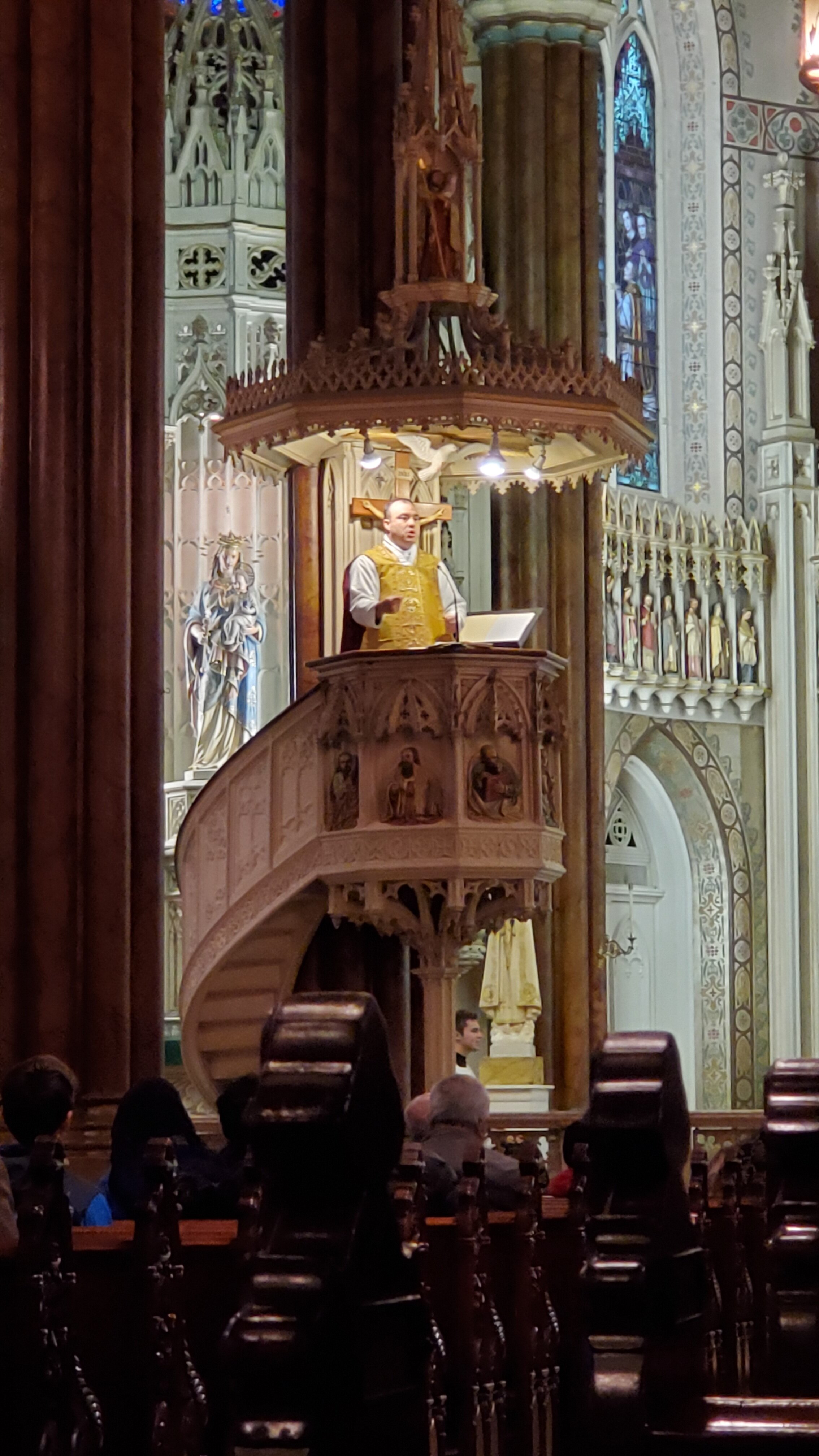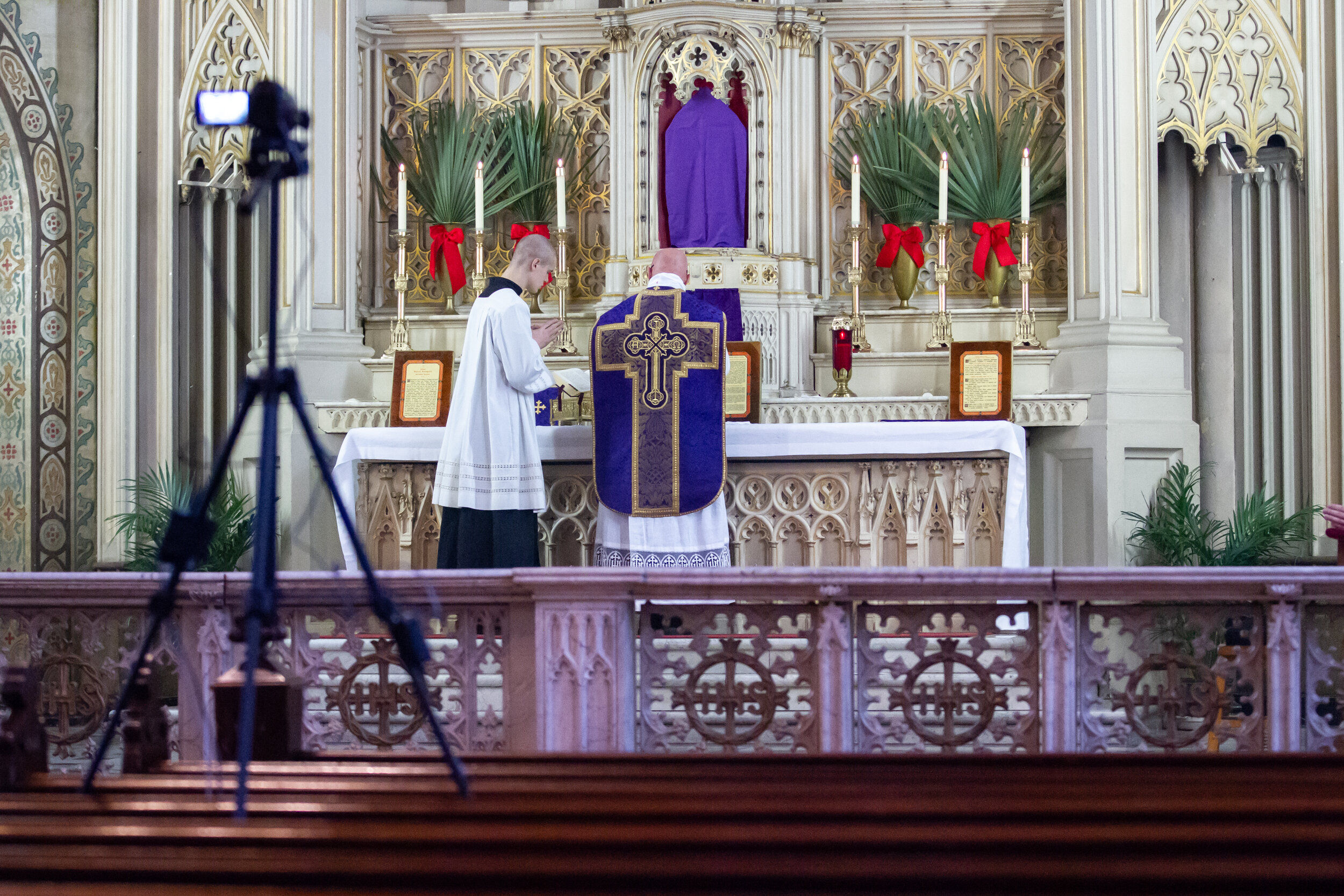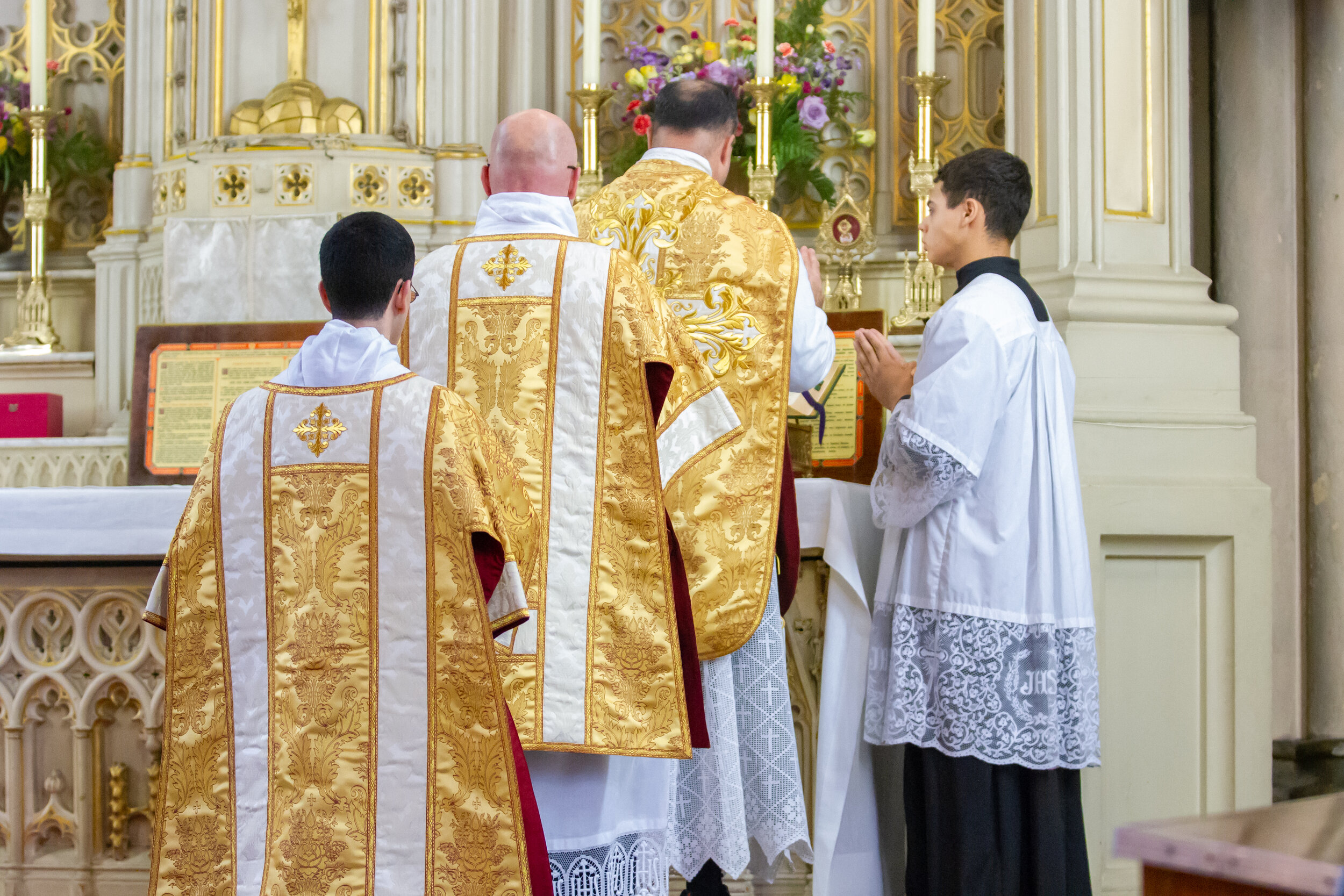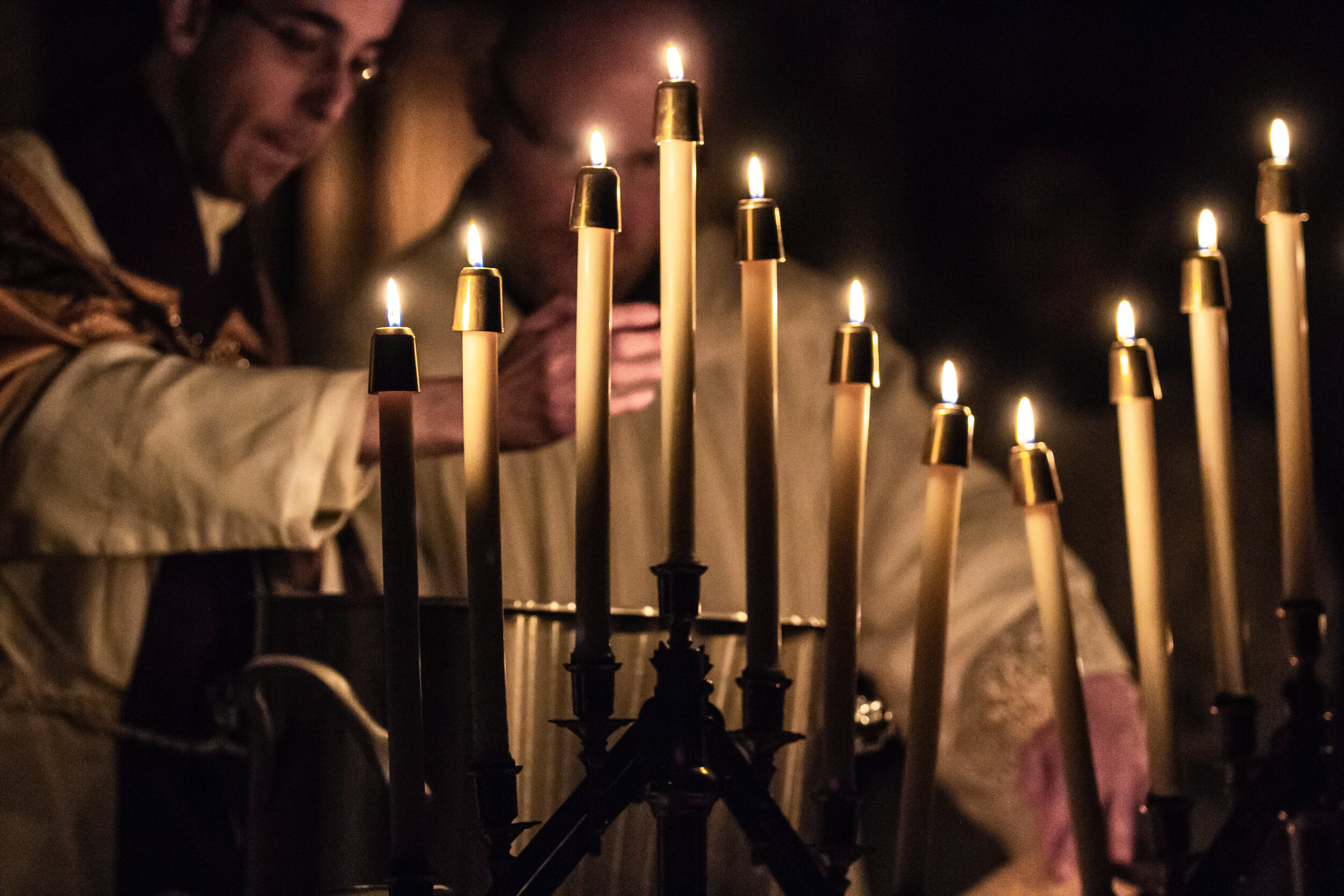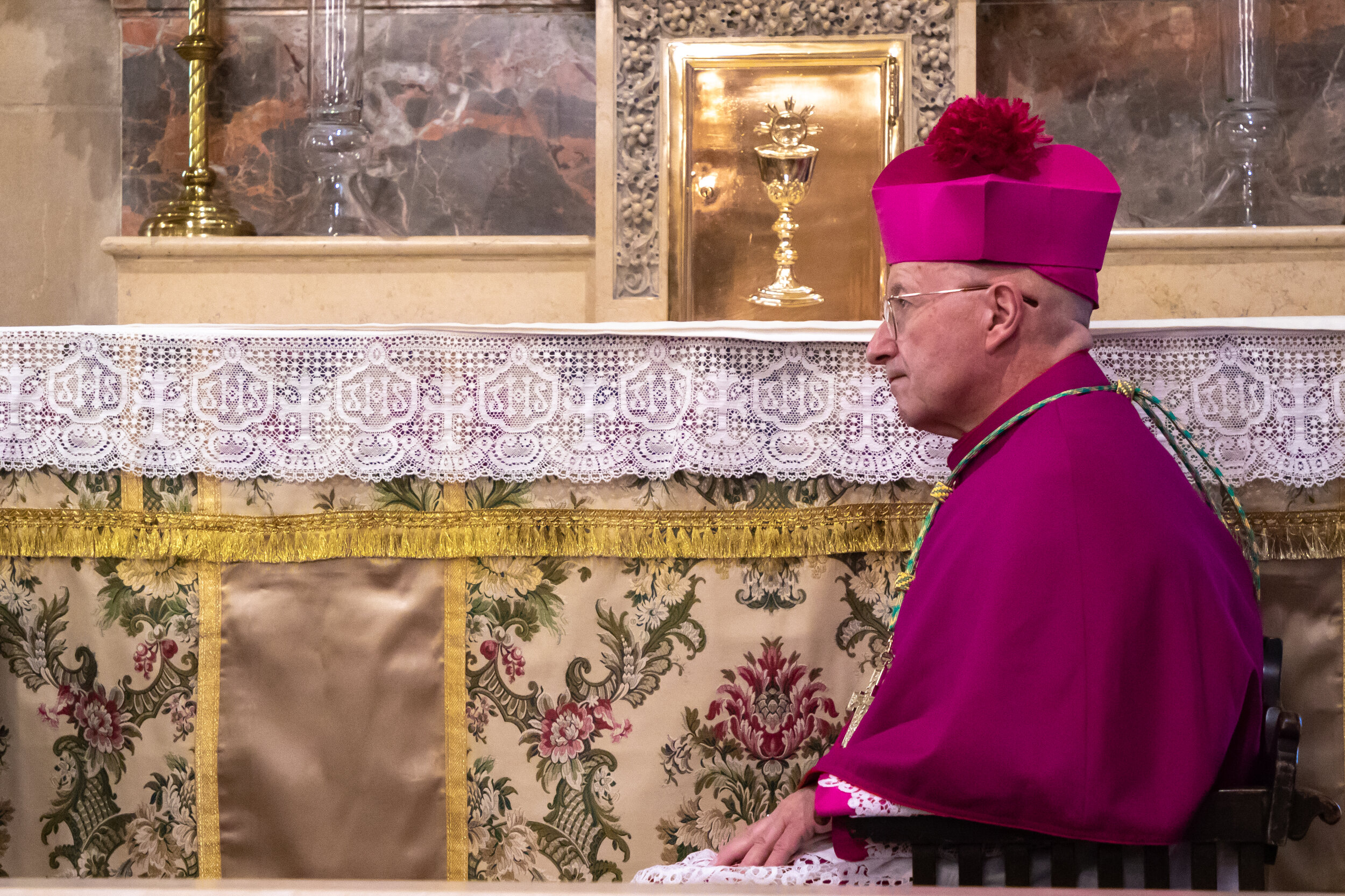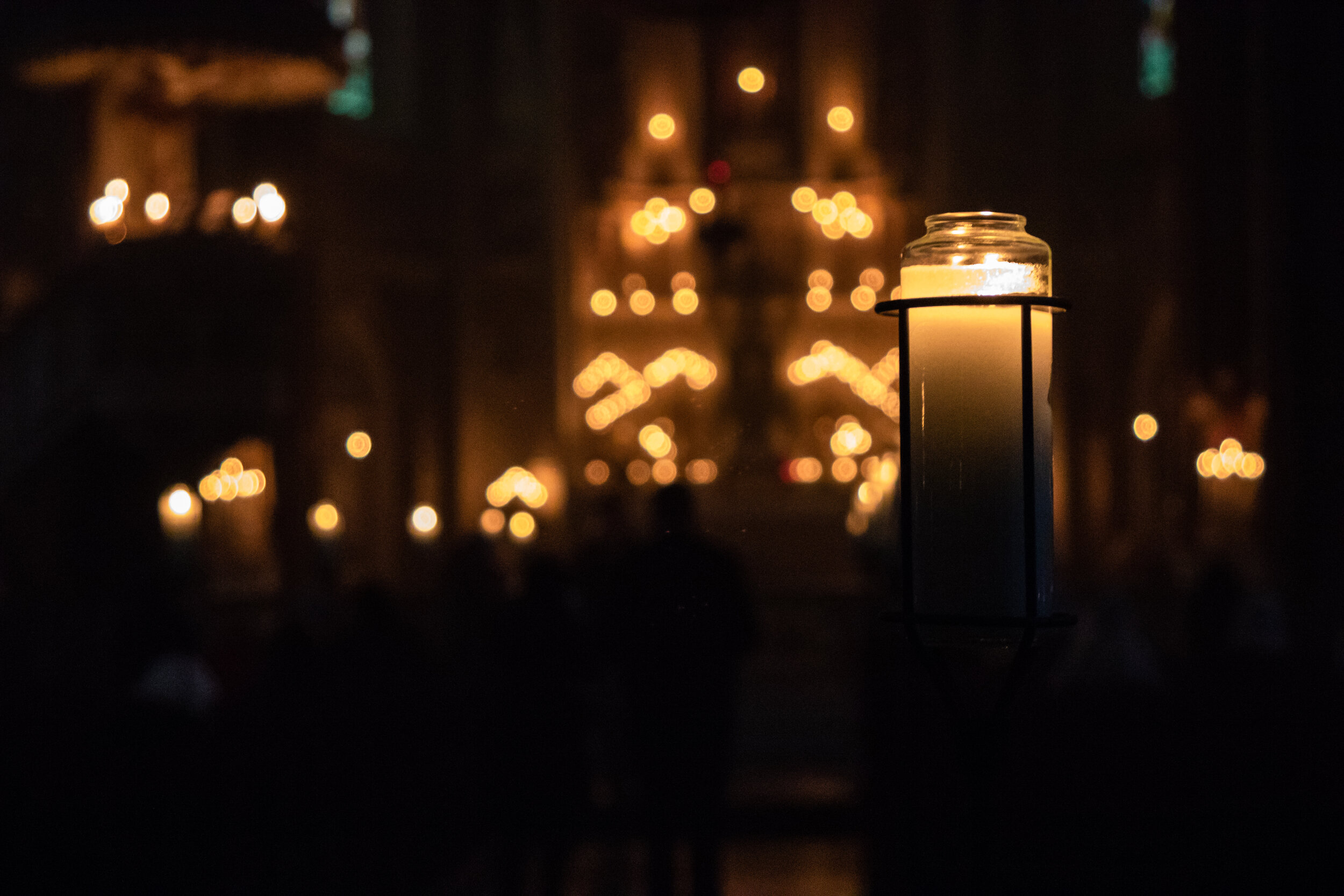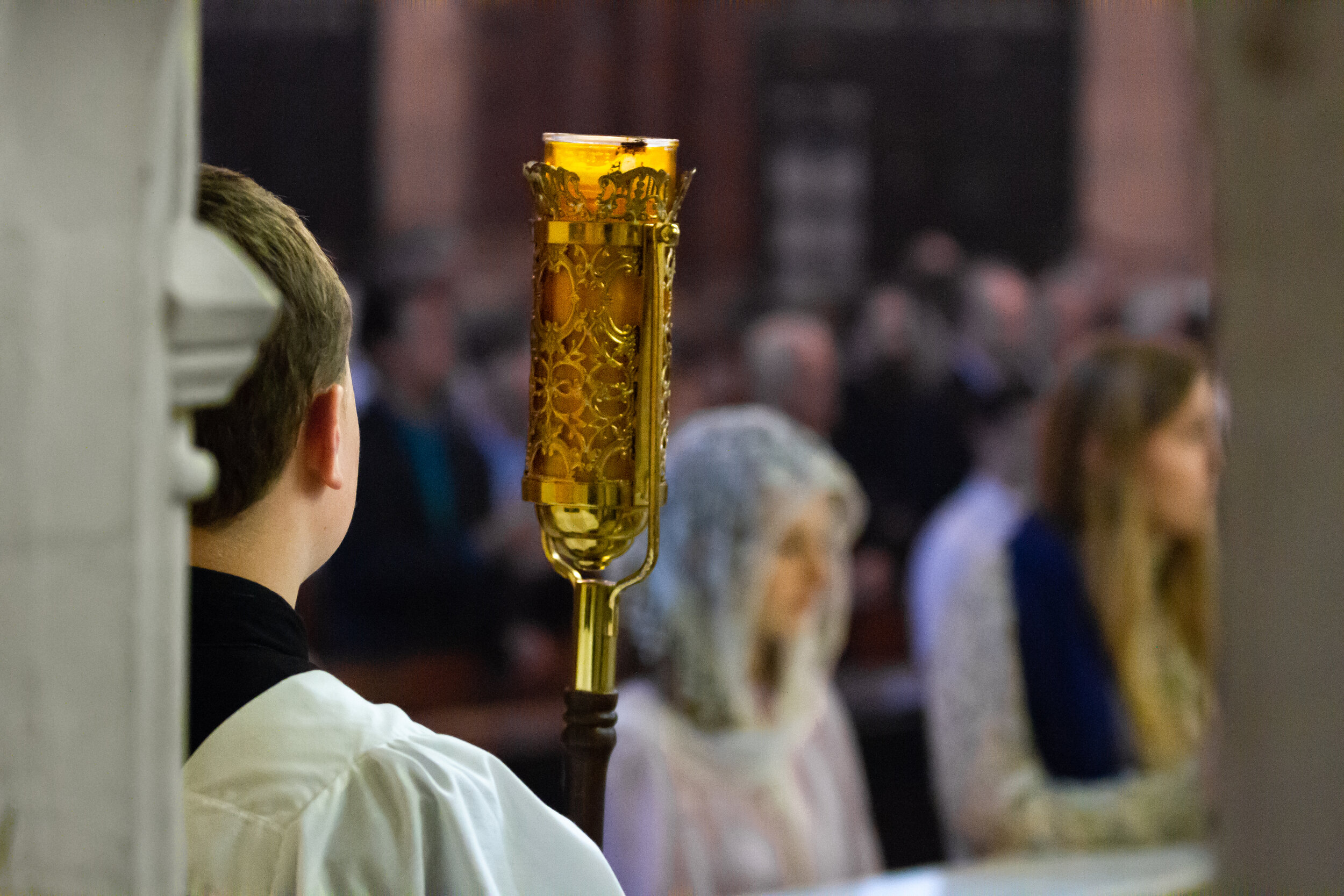How to Shoot the Traditional Latin Mass (and tips for dark indoor photos)
His Excellency Cardinal Burke and Solemn High Pontifical Mass of Priestly Ordination of Fr. Thomas Mary of Jesus, Er. Carm. Cathedral of St. Patrick, Harrisburg, PA in August, 2019. This Cathedral had good light!
The Traditional Latin Mass is the old Roman Catholic rite said over the centuries. This is the pinnacle of Christian life. This ancient Mass stands apart from anything and everything else. It is said in Latin. It absolutely reeks of reverence and purity. It engages all the senses. There are pillars and high ceilings with profound artwork and colors; incense filling the sanctuary wafting high with heavenly smells; ringing of bells and words of a dead language which preserve the meaning of the liturgy. This is how God wants to be worshiped.
So it matters how and why you do it.
My discretely taken phone pic from Church, LOL
My opinion is that the TLM should be photographed for these few reasons:
For documentation and historical evidence
In support of Church promotionals, advertising, websites and social media and to enhance the well being of the parish
Because the priests want you to
To show the world what it’s missing
That doesn’t mean you cannot discretely take a phone pic from the pews (see picture left). It is an extraordinary sight, all of it, and there’s nothing wrong with wanting to take a little piece of heaven home with you, but for someone whose job it is to document this Mass, there are some things to know. So here are some insights I’ve gained over the years.
My list of Do’s and Don’ts
DO’s:
1) Be Catholic- and believe in this Mass.
2) Get permission- If you can, get to know the priest so he feels comfortable with your work. Make sure ahead of time, especially if it is not your parish, that he knows you’ll be there. If you cannot get a hold of the priest, check with his secretary or assistant to ensure you are welcome to shoot. The priest may know you and may have given you carte blanche to shoot anytime, but as I always ask to be polite and unassuming.
3) Be a stealth ninja- Be aware that people are behind and beside you. Be as covert as you can and respect their devotion.
4) Respect the Mass- Obviously, no chewing gum, sucking on mints or bringing drinks with you.
5) Sit in the front row if you can- If this isn’t a Mass you are shooting from beginning to end, sitting in the front row means you can get some good stuff while kneeling and being respectful.
6) Be creative- Use a variety of shots. Zoom in on the details and zoom out to interpret the atmosphere and give as much of a peripheral view as you can. Focus on what makes this Mass different from the last one.
7) Use your camera like a rifle, not a machine gun- I was shooting an important ordination last year and a photographer from the diocese set his camera to high speed continuous mode. During the consecration, it sounded like rapid fire high-caliber machine gun. I, on the other hand, laid in wait and was deliberate about the shots I took and was much less noisy. The Church secretary said I’m a photo sniper: one shot gets it done. And think about it; when he got home, he had 30 shots to process to one just of mine. How much time do you want to spend in Lightroom?
DON’Ts:
1) Don’t assume everyone is okay with it- Not everyone is going to appreciate someone taking photos during the Mass… even if they’re wrong or rude (which almost never happens) remember that you aren’t invisible and that can be annoying. But then carry on.
2) Don’t use a flash- There’s no way a flash isn’t intrusive. It’s an obvious distraction and 99% of the time you don’t need it. Learn to shoot without a flash and use natural light. You might need to use a flash occasionally, but don’t rely on it. It should be rare. The last thing you want to do is blind the priest or altar boy.
3) Don’t be redundant- Look for what makes that Mass different from the others and don’t try to photograph every single Mass. Look at liturgical colors, differing vestments, number of priests, the uniformity of the altar boys or rituals specific to that particular Mass and hone in on those things.
4) Don’t think you’re the most important person in the room- humility is your biggest asset. This Mass has been going on long before you were born and will be long after you’re gone. It’s bigger than you and this understanding will guide you as you decide what and when to shoot.
5) Don’t be unprepared. The best thing about the Mass for a photographer is that is has slow, deliberate and predictable actions. Know what’s coming. Last year I photographed the first Mass for a Carmelite priest. Immediately following the Consecration, the Carmelite priest will look toward heaven and stretch out his arms as if on the cross. It is a dramatic moment I was warned about days ahead of time, but I was so caught up in the moment of Consecration that I totally forgot and looked up to find the new priest lowering his arms. DOH. I should have reviewed my notes beforehand and I kick myself to this day for missing that shot. Don’t let this happen to you!
Tips shooting tricky, dark indoor shots
My Church in Baltimore, Maryland, the National Shrine of St. Alphonsus of Liguori, was founded in 1845 and has awful lighting. Even so, I’ve gotten camera settings for my Canon 7D with 70-200mm f/2.8 IS ii and Canon 7D Mark ii with 24-105mm f/4L IS ii lens down. With dark conditions and crop sensors, I know clarity will be a challenge and noise will be an issue. Deciding on the shooting mode is first and easiest; it has to be shutter priority. To have any chance of sharpness, I have to use a shutter speed that will freeze the moment and won’t be blurry. These are my go to yet negotiable settings:
Shutter Speed: 1/160 – 1/200th
Aperture: wide open (f/2 or f/4.8)
ISO: auto (cap at 3200)
Exposure Compensation: 3-5
I use auto ISO because with light different in every corner of the Church, I have to let it decide and settle for shutter speed over noise. Noise can be corrected, a blurry photo cannot. The good thing about the Latin Mass is that most movements throughout the entire liturgy are usually slow, measured, predictable and there are lots of still moments.
I’ve photographed in Churches in which shutter speeds were higher, ISO was lower and there was no need for Exposure Compensation, but these are the main areas that need to be managed in a dark Church. Here are some examples settings:
Shutter speed: 1/200; Aperture: f/2.8; ISO: 6400; Exposure compensation: +3
Shutter speed: 1/80; Aperture: f/4; ISO: 6400; Exposure compensation: +4
Shutter speed: 1/160; Aperture: f/2.8; ISO: 3200; Exposure compensation: +3
Tips for Creativity
There are ways to relay the heart of what you’re photographing. Below are some categories I use naturally to set photos apart from one another.
DISTINCTION
Each Mass is similar, so if you’re shooting for a special reason, focus on what makes it unique.
Is it clear that this is Palm Sunday? Good! It should be! I focused on the priest but the palms make it obvious.
You can tell two things by this photograph: 1) it’s Palm Sunday and 2) it’s historic. Coronavirus restrictions prohibited the faithful from attending Mass so pews are empty and a video camera relays the Mass via live-stream.
UNIFORMITY
I like capturing the cohesiveness in the rituals of the Mass. They show the underlying order and make an impact.
At a Solemn High Mass.
So squared away…..
Everyone has a part to play and knows their place.
DETAILS
Zooming in and capturing little details can make a big affect. Here are some examples:
This shows piety toward the Gospel as it’s read by the priest. Photos like this are also good for publications and websites because it focuses on the faith and not the people.
Details! The care with which the priests respect the Eucharist is really moving. Most people won’t see this from the pew so unless you’re an altar server, you won’t even know this is going on. This is where the photographer comes in.
Candles are the focal point…look how many….
During ordination, the priest has a handkerchief bound around his hands with his name, order and date of ordination. This is later given to the mother of the priest so she can be buried with it. It’s a way of honoring the mother for giving up her baby boy to the priesthood.
ARTISTIC
I try to look for elements around the Church that look artsy and dramatic.
She sings in the choir like an angel and looks like a painting!
His Excellency Cardinal Burke, center, makes this look like a work of art with his long red vestment.
This bishop was listening to the sermon but the background also gives a painting affect.
BOKEH
Bokeh is a technique that makes a background (although sometimes foreground) look out of focus, soft and dreamy. It comes from the Japanese word “boke”.
It’s easy to capture bokeh in low light scenarios with candles. The focal point provides good lighting easily softening the background.
It works in good light, too! Have your aperture wide open and focus on the point of interest.
Just know what you want to highlight and the rest is easy. Just have a wide open aperture.
HUMAN ELEMENT & EMOTION
This can be one of the most important but tricky qualities to convey in a photograph. You are dependent on the people who are there. Be observant and don’t be afraid to lock in on humans.
After the Mass you can often catch the priests exhaling in a bond of brotherhood. And recessions often lead to back alley and other cool photo ops.
This is of course after Mass, but in a procession marking the Feast of Christ the King through the streets of Baltimore, a man on the sidewalk bowed and then made the sign of the cross. It was a sweet moment.
Altar servers are often good sources of human interest. I love here that Xavier closed his eyes and listened to the words of the Gospel.
A good sermon can also provide an image with emotion.
During the procession for the Feast of Christ the King, the statue of Jesus is carried past a torn sign that reads, “No one ever really dies.”
Incense can provoke emotion, too.
The altar server incenses the people to a backdrop of candles at a Rorate Caeli Mass.
This is just my style and these are my techniques. Every photographer has their own, but hopefully I’ve offered some insight to those interested in capturing this beautiful Mass. Carpe diem!

